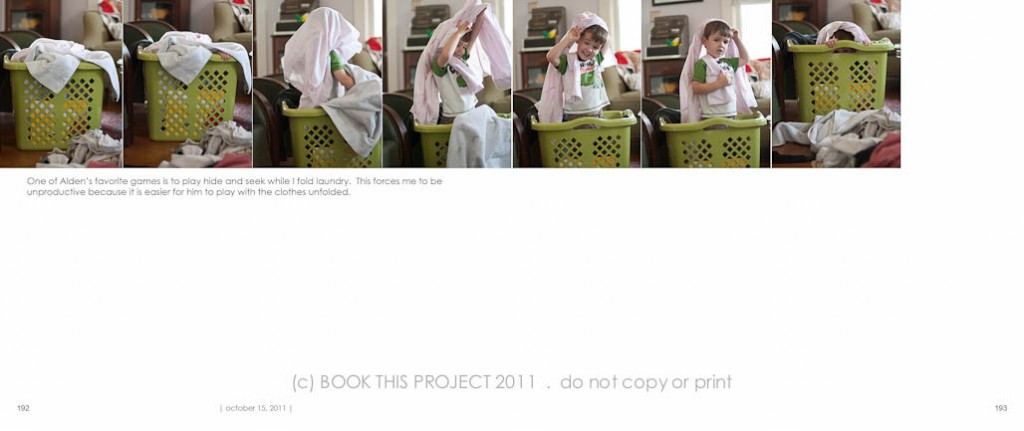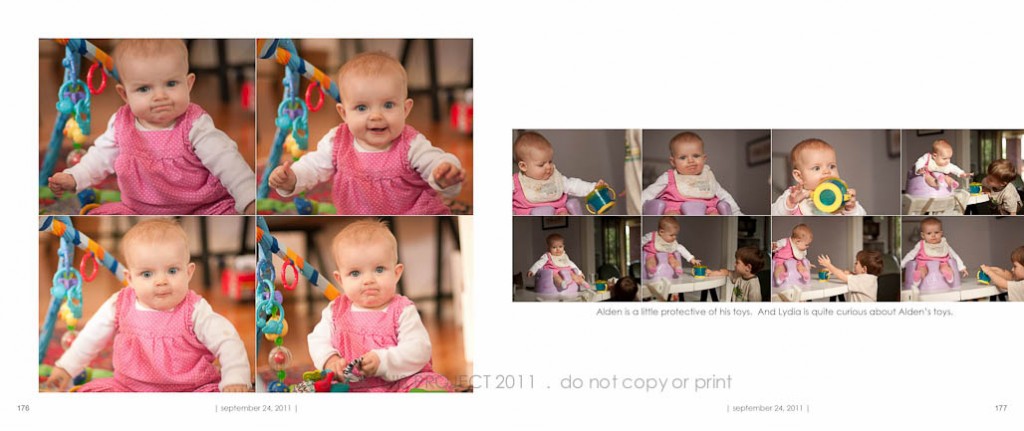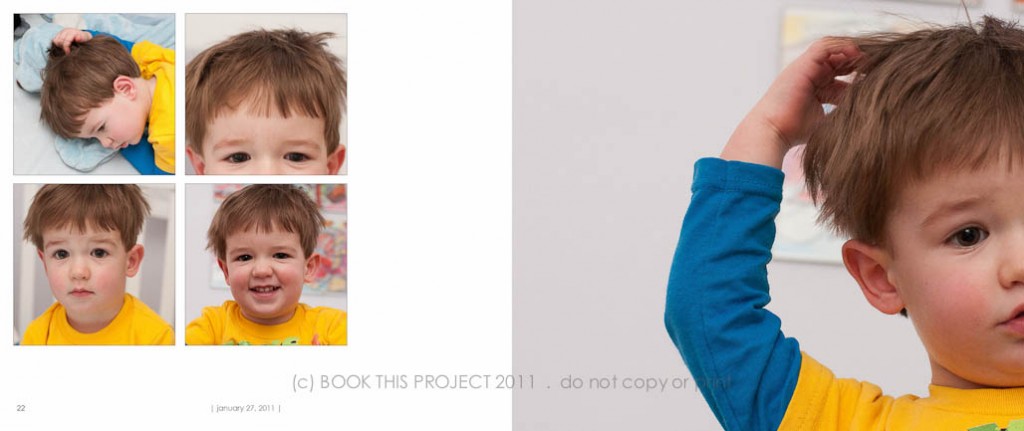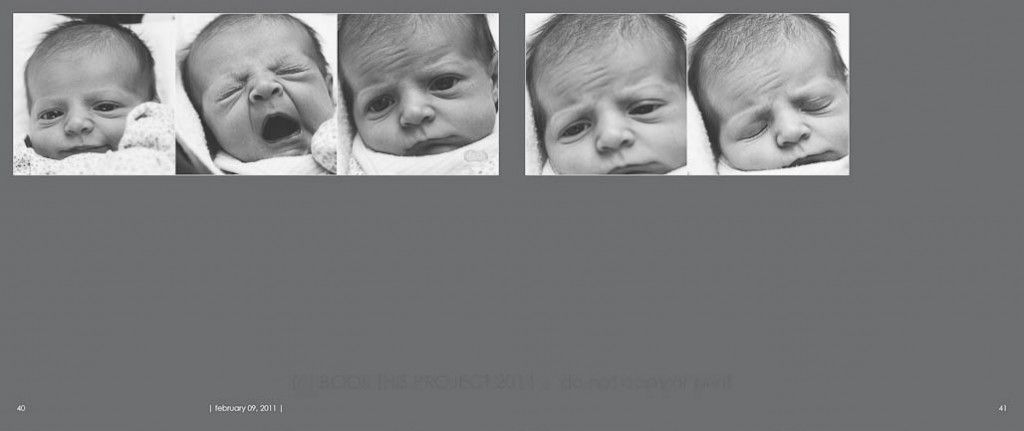by Stacey Wiseman | Apr 13, 2012 | Description, Family Photographs, Photo Book Design Layout, Photograph, Podcast
The March/April podcast is finally here! It took me a while but I was finally able to pull it all together!
In this podcast, I take a simple photo book concept from beginning to end. There is a FREE companion download to this podcast. I hope you check it out and I would love to hear how it helped your photo book. Also, I would love to see any photographs or layouts you come up with! Add a comment with a link below!
Thanks and Enjoy!!!
by Stacey Wiseman | Apr 9, 2012 | Description, Family Photographs, Inspiration, Photo Book Design Layout, Photograph
I hope everyone had a great Easter! We kept extremely busy. Breakfast, egg hunt, convert crib into big boy bed, lunch, laundry, nap, clean up, Easter dinner at my in-laws and bed. My son is really starting to get the concept of holidays and gets so excited. I love seeing his smile on these days. And my girl had some fun too!
For my family photo book layout, I designed a spread with one large photo on the left and a photo collage on the right page. This is a great way to combine a lot of photos into only two pages. For inspiration, take ideas from collage boards. Samples are everywhere…but I pinned an example from a wedding inspiration board.
[divider] Left:

[divider] Right:

[divider] Spread:

by Stacey Wiseman | Mar 27, 2012 | Description, Family Photographs, Inspiration, Photo Book Design Layout
I had the great pleasure of designing a beautiful Project 52 book. This book is a collection of photographs she took every week for an entire year. I love how her photographs tell a story! One fantastic feature of this book, I was quite easily able to adapt to the design of the book to her photography blog. For a comparison, check out her blog here!
All photographs in this post are copyright protected by Tamra Yandow. Do not copy, print or distribute.
Here are a few of the design layouts:




[divider]
Here are the specs of the book:
Design: Outline
Book Type & Size: Hardcover / Landscape (10”wide x 8”tall) / Professional Grade Paper
Number of Photographs: 146 photographs
Number of pages: 100 pages
Organized by: Week
All photographs are copyright of the Book This Project client.
All page layouts are design of Book This Project, LLC. All rights reserved.
For a limited time only, here is a preview of the book.
by Stacey Wiseman | Mar 8, 2012 | Family Photographs, Inspiration, Motivation, Photo Book Design Layout
On Tuesday, I posted some photographs from our family Saturday morning biscuit baking!
I want to show some examples of how this can be translated to a photo book layout. I hope this inspires you to document your family meal and incorporate the photographs into your photo book.




[divider] And if you need additional inspiration, a more in-depth example of family meal photo book layouts will be in the upcoming podcast!
by Stacey Wiseman | Feb 28, 2012 | Photo Book Design Layout, Photograph
I am still working on my February food challenge post…(can’t believe tomorrow is the last day of February…and we even have an extra day) but until then, here are a couple of photos of my 2011 Family Photo Book. All 300 pages!!!


by Stacey Wiseman | Feb 6, 2012 | Motivation, Photo Book Design Layout, Tutorial
Have you ever tried to capture motion? Every step of an activity? These provide for really fun design layouts in a photo book. I want to show you a couple of examples of photographs in a series in order to document the movement and energy of a task.
First, the photographs.
Burst mode:
Be prepared to take several photographs in quick succession. Some cameras have a burst mode. You press and hold the shutter and the camera takes photographs in a row until you release. Although I typically recommend shooting in RAW, when I use my point and shoot, RAW photographs took too long for my camera to process. If you find this is the case, switch to jpeg in order to get several photos in a row.
Subject matter:
Subject matter is key. Make sure the activity documents the event in a series of steps. It could be a sport – kicking a soccer ball – or – it could be the expressions within a given moment. The point of the photographs shows a beginning, middle, end in a very succinct moment.
The frame:
Consider the frame. In a successful series, the subject in the frame should be consistent in order to keep the focus on the activity itself and not the subject moving around the frame.
Second, the layouts.
In a line:
The key to the photo book design layouts, in most cases, is linear. To fully appreciate the action, it is best to see the photographs in a line. My preference is to keep a simple layout with the photo boxes the same size and same orientation (vertical or horizontal).

In a square:
Even though a series looks fantastic in a line, don’t think it always has to follow this format. Consider arranging your photographs into a square format.



Above photographs copyright of Shumaker Family 2011.
Notice the spine:
Take note of the spine. The hardest part of arranging photos in a linear fashion across an entire book spread is the middle photograph; the photo on the spine of the book. A majority of the photograph in the center will be invisible in a book where the pages do not lay flat. In order to keep the subject matter visible in the book, increase the size of the photo book in order to position the subject within the visible guides. In the layout below, all photographs are the same size except for the photo in the middle. The width is increased in order to keep the subject visible on the page.
 Above photographs copyright of Shumaker Family 2011.
Above photographs copyright of Shumaker Family 2011.
Tell the story:
If your photographs tell a story but the subject is not consistent within the frame, make is apart of the layout. The example below illustrates my son waking up from his nap. His perfectly round face and puffy eyes are exhibited on the left. The unusual crop on the right focuses on his habit of twisting his hair when he wakes (or when he falls asleep)! This layout would not make sense as a line because it captures all different aspects of waking up. Preparing the layout in a square allows the viewer to pay attention to the moment, the story, rather than the sequence.

My original intention of these photographs was not to display in a line; however, I loved the raw documentation of sleep. The yawn! With consistent black and white processing, the photographs read as one to convey this moment. Even though the my daughter’s face occupies the frame at different scales, placing these photos in a line highlights the sense of time elapsing.

[divider]
Be unique:
This final example approaches a series in a slightly different way. First of all, only two photographs are included. A full bleed is utilized to maximize the content. This series played with scale more prominently than action. My daughter loves to lean completely over while sitting cross legged. The photo on the left informs the photo on the right.

[divider] What activities have you shot in a series?
If you have an example, I would love to see a link to your blog post!

























